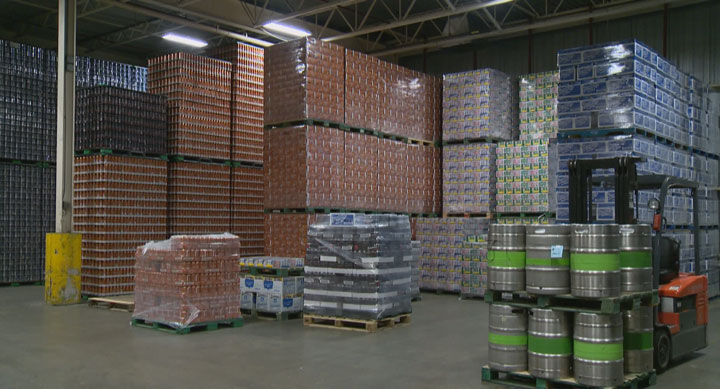SASKATOON – Science has partnered up with Saskatoon’s Great Western Brewing Company (GWBC) to help its beer have the same great taste forever.

GWBC beers will never lose their unique taste once the Saskatchewan Institute of Applied Science and Technology (SIAST) identifies the DNA in a key ingredient.
Researchers at the SIAST BioScience Applied Research Centre (SBARC) have commenced a project that will analyze a yeast’s genetic profile and work on cryogenically freezing a sample for future culturing if needed.
“Yeast is a single-celled organism that is within the fungi group, with about 1,500 species described,” said Lance Wall, SIAST instructor and primary overseer of the project.
The Saskatoon brewery, located on 2nd Avenue, uses the same strain it purchased from a yeast bank in 1995 for all of its brands of beer.
This specific strain of yeast purchased by a GWBC brewmaster is a mystery.
“A few years ago, we had a situation where our yeast was in jeopardy and that was a wakeup call,” said Anita Fuller, GWBC’s manager of corporate quality assurance.
Also, a sample of the original yeast culture from 1995 that was housed in an ultra-low temperature freezer at the University of Saskatchewan had been lost due to departmental changes.
Coincidentally, SIAST was in the process of expanding its role as a post-secondary school into applied technological research.
“Our bioscience technology program is quite heavily involved with applied research, we look for industry partners that have a question or a problem and we take the technology we have on site to figure it out,” said Wall.
“It helps our program build capacity and expertise and it’s a fabulous opportunity for our students to be more job-ready.”
A $25,000 grant was secured by SIAST through a federal agency, enabling the collaboration between the two to move forward.
GWBC says there are trade secrets to making their beer and one is yeast.
“Right now, our yeast is delivering the flavour profile that we want for our brands and in terms of its fermentation and post-fermentation characteristics it is an ideal yeast strain,” said Fuller.
GWBC currently produces a dozen different beers including Original 16 and Brewhouse.
“As the yeast becomes more unique over time it contributes those characteristics to the flavour and the character of the beer, so potentially this is different than yeast used anywhere else,” said Wall.
“It’s been pretty much separated from mixing with any other yeast and is kept alive, so each batch you keep a little bit and use it in the next and it grows up more, the same thing can be done traditionally in a bakery.”
David Thiessen, a student from SIAST’s bioscience technology program, is using DNA techniques to characterize the genetic identity of GWBC’s proprietary yeast culture.
“Then they will see how close a match it is to an existing strain at yeast banks,” said Fuller.
Once identified, GWBC plans to freeze a sample off-site to ensure the continuity of its recipes.
“This baseline information and cryogenized culture are critical to recovering the yeast if it were damaged or contaminated,” said Fuller.
“As long as the freezer maintains a constant ultra-low temperature, if it doesn’t vary too much, it should pretty well last forever.”
The brewery says it’s common of others in the industry to genotype their yeasts and preserve them.
GWBC has over 90 employees and says it’s on stride to fill 38 million cans of beer by the end of 2014.
“This is our last big commercial brewery in Saskatchewan, so if we can benefit employee-owned Great Western, if we can do anything to keep that going we’ll be happy,” said Wall.
The research project is expected to be done by early fall.


Comments